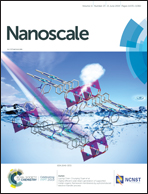Laser-reconfigured MoS2/ZnO van der Waals synapse†
Abstract
Inspired by biological neural systems, neuromorphic devices may lead to new computing paradigms for exploring cognition, learning and limits of parallel computation. Synapses form the basis of neuromorphic computing and have attracted significant research interest in recent years. Herein, a three-terminal transistor based on a transition metal sulfide and zinc oxide heterojunction is proposed for emulating biological synapses. The transistor exhibits an ON/OFF ratio (104) and significant rectifying behavior with forward-to-reverse bias current ratios of 104. The device demonstrates the essential synaptic behaviors, such as excitatory postsynaptic current, modulation of synaptic weight and paired-pulse facilitation. Furthermore, we show that the hysteretic effect of the transfer curves and the post-synapse current triggered by the presynaptic pulses can be modulated by illumination, and the current under illumination conditions is about 10 times greater than that in the dark. These synapses combine photonic with electric neuromorphic functions, thus showing the application prospects of the optoelectronic interfaces for integrated photonic circuits based on mixed-mode electro-optical operation. Hence, this work offers a new landscape for 2D-material electronics and encourages future research on neuro-electronics.



 Please wait while we load your content...
Please wait while we load your content...